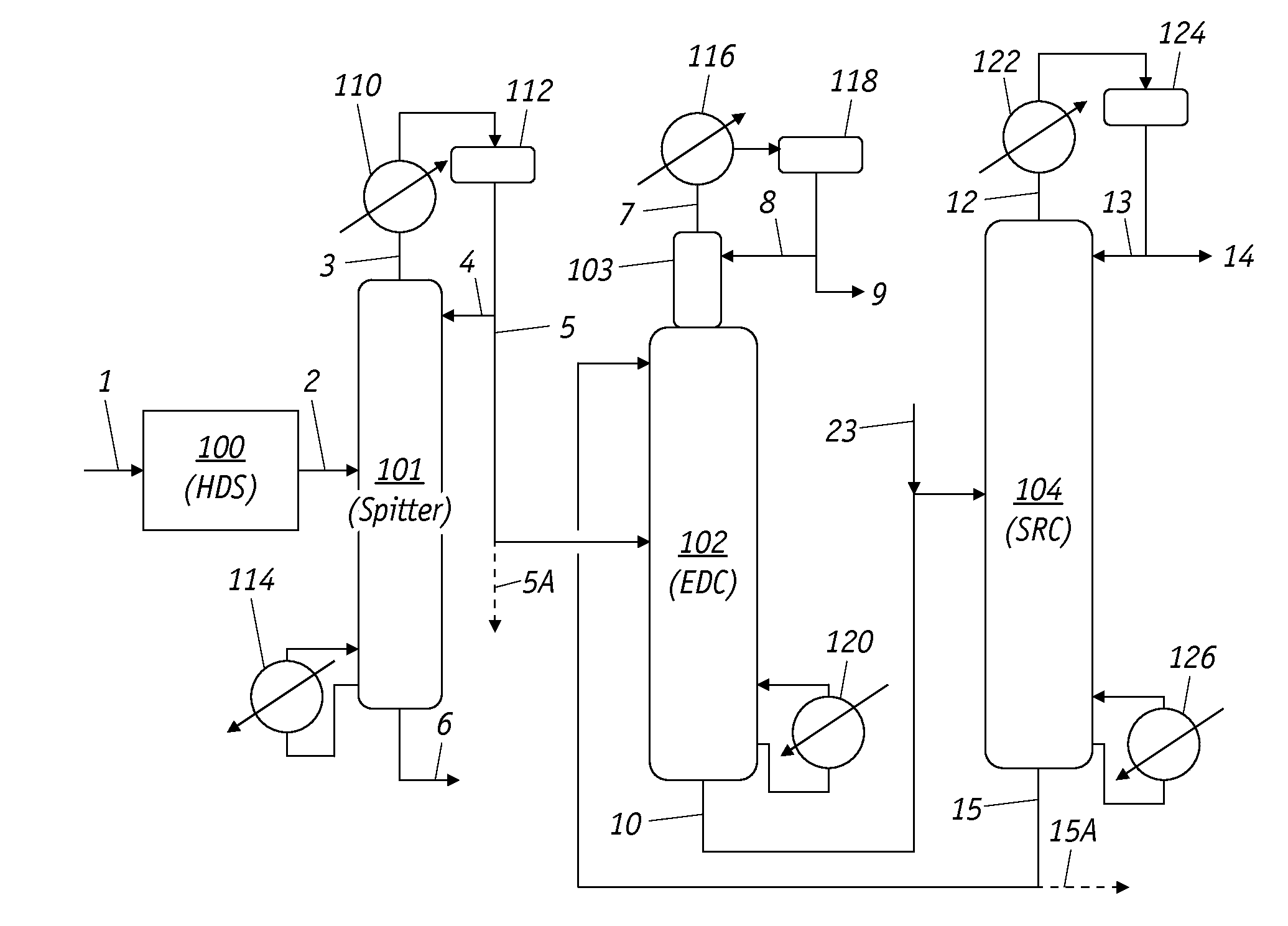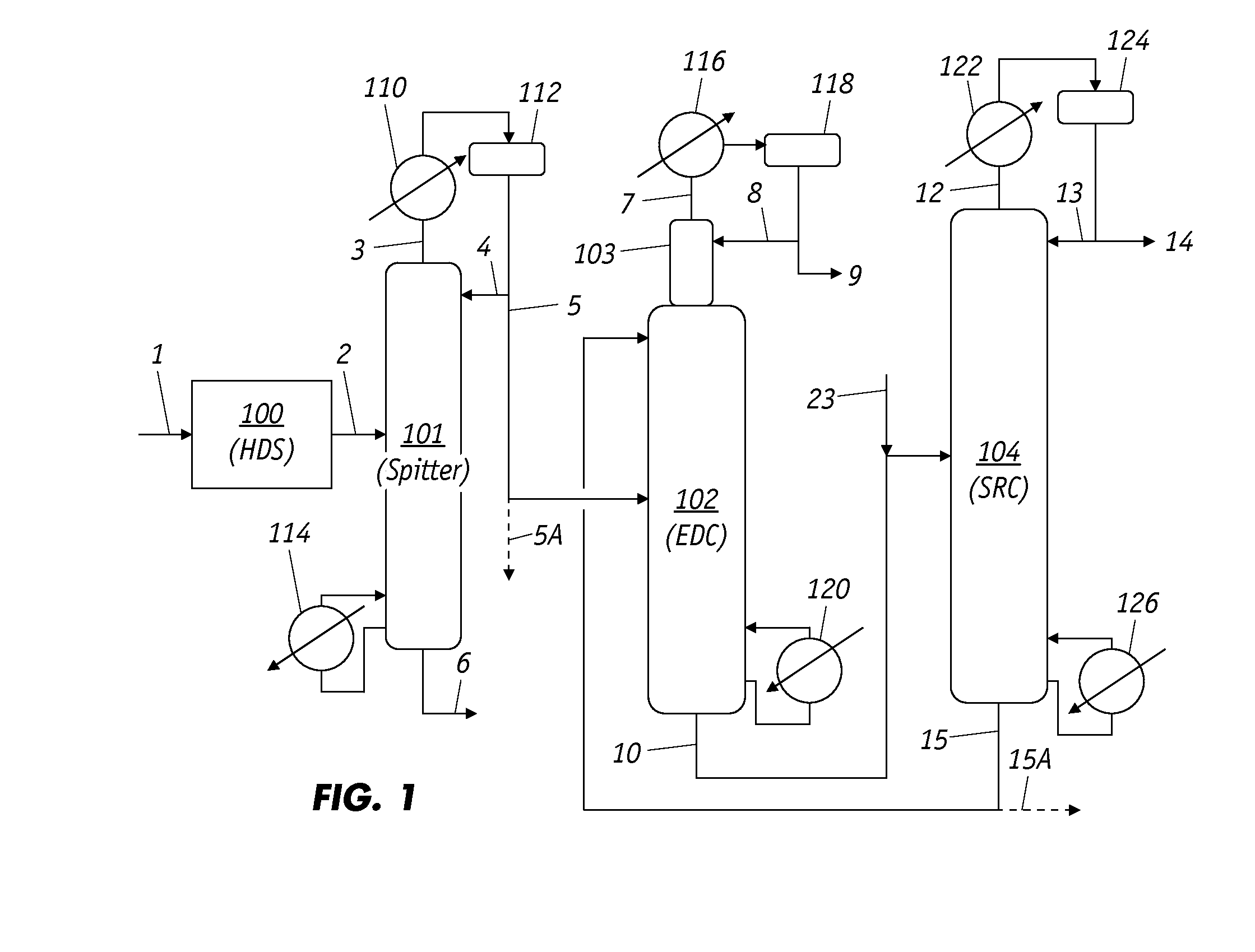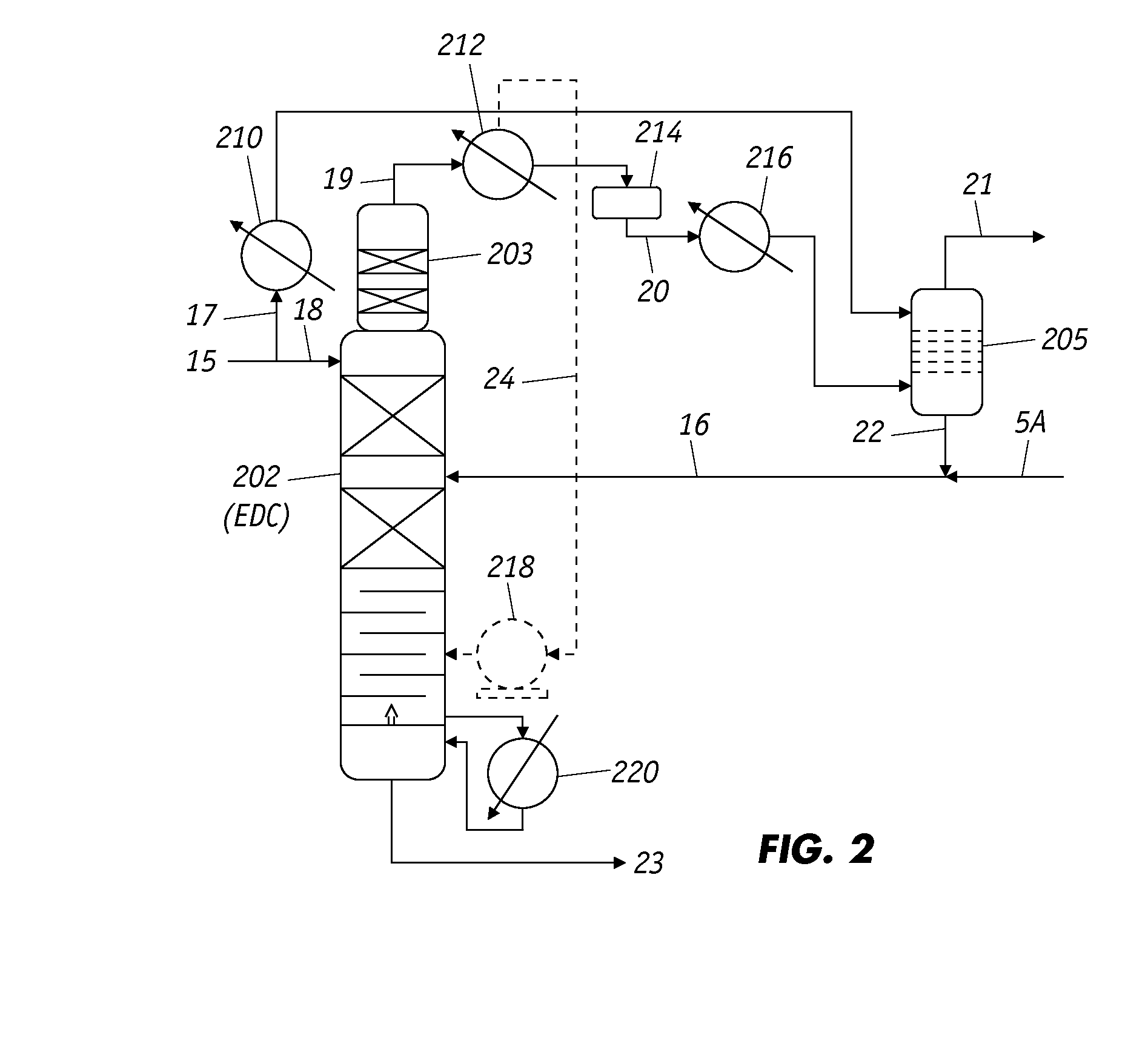Extractive Distillation Process For Benzene Recovery
- Summary
- Abstract
- Description
- Claims
- Application Information
AI Technical Summary
Benefits of technology
Problems solved by technology
Method used
Image
Examples
example 1
[0046]To demonstrate effectiveness the of N-formyl morpholine (NFM) as a selective solvent for extracting benzene from overhead stream of the raffinate distillation column 203 (which an integrated upper part of EDC 202) shown in FIG. 2, extraction experiment was conducted in laboratory using a glass separatory funnel. A sample of the overhead raffinate stream was analyzed in a gas chromatography / mass spectrometer (GC / MS) analyzer and the composition of the stream is summarized in Table 1.
TABLE 1Composition of Overhead Raffinate from Column 203 / EDC 202ComponentWt %ComponentWt %i-Pentane0.49n-Pentane1.75Cyclopentane31.792-Methyl Pentane0.383-Methyl Pentane0.23n-Hexane0.94Methylcyclopentane4.33Benzene45.11Cyclohexane6.062-Methyl Hexane0.18Dimethylcyclopentanes1.433-Methyl Hexane0.26n-Heptane1.72Methylcyclohexane4.07Ethylcyclopentane0.90Trimethyl Pentanes0.30
[0047]The analysis demonstrated that the overhead raffinate stream, besides containing benzene, is extremely rich in cyclic paraff...
example 2
[0050]To test the effect of the solvent-to-feed ratio on the separation factor for separating benzene and cycloparaffins, especially MCH, the lab experimental procedures of Example 1 were repeated under S / F of 1.0, 4.0, 5.0, and 6.0. The test results are summarized in Tables 4 to 9.
TABLE 4Composition of Raffinate Phase from Extractionwith 1.0 of Solvent-to-Feed RatioComponentWt %Wt %*ComponentWt %Wt %*i-Pentane0.600.62n-Pentane2.192.27Cyclopentane36.7938.082-Methyl Pentane0.510.533-Methyl Pentane0.310.32n-Hexane1.291.34Methylcyclopentane5.465.65Benzene29.9230.97Cyclohexane7.587.852-Methyl Hexane0.260.27Dimethylcyclo-1.261.303-Methyl Hexane0.460.48pentanes3-Ethyl Pentane0.250.26n-Heptane2.472.56Methylcyclohexane5.435.62Dimehtylhexanes0.190.20Ethylcyclopentane1.201.24Trimethyl0.230.24PentanesNFM (Solvent)3.37*Composition on a solvent-free basis
TABLE 5Composition of Extract Phase from Extractionwith 1.0 of Solvent-to-Feed RatioComponentWt %Wt %*ComponentWt %Wt %i-Pentane0.170.28n-Penta...
example 3
[0053]The test results from Examples 1 and 2 were incorporated into a simulation model of the process illustrated in FIG. 2 and employed to design an improved process for recovering high purity benzene with acceptable an MCH content from a hydrotreated C6 fraction of coal tar or other similar feedstock that features various aspects of the invention. Specifically, referring to FIG. 2, a NFM solvent feed that is at temperature in the range of 90 to 110° C. is fed to the upper portion of EDC 202 via lines 15 and 18 at a rate of approximately 21,600 kg / hr, while roughly 3,700 kg / hr of a hydrotreated C6 fraction from the top of splitter column 201 is introduced to the middle portion of EDC 202 through lines 5A and 16 at temperature in the range of 70 to 90° C. Reboiler 220 of EDC 202 is operated at a temperature range of 130 to 150° C. to drive substantially all of the MCH from the bottom rich solvent, which consists of essentially pure benzene and the solvent, and exits the bottom of ED...
PUM
| Property | Measurement | Unit |
|---|---|---|
| Temperature | aaaaa | aaaaa |
| Fraction | aaaaa | aaaaa |
| Fraction | aaaaa | aaaaa |
Abstract
Description
Claims
Application Information
 Login to View More
Login to View More - R&D
- Intellectual Property
- Life Sciences
- Materials
- Tech Scout
- Unparalleled Data Quality
- Higher Quality Content
- 60% Fewer Hallucinations
Browse by: Latest US Patents, China's latest patents, Technical Efficacy Thesaurus, Application Domain, Technology Topic, Popular Technical Reports.
© 2025 PatSnap. All rights reserved.Legal|Privacy policy|Modern Slavery Act Transparency Statement|Sitemap|About US| Contact US: help@patsnap.com



